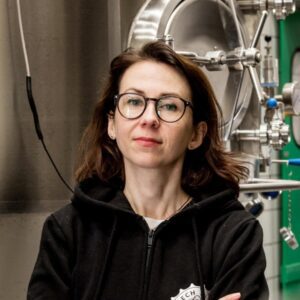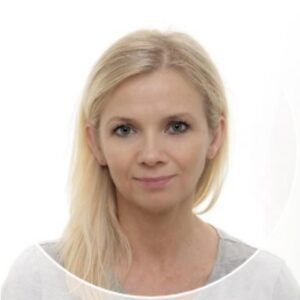fot. Materiały Instytutu Wzornictwa Przemysłowego
Ponad 70-letnie doświadczenie w upowszechnianiu i zarządzaniu wzornictwem oraz rozwojem nowego produktu, a także 30 edycji prestiżowego konkursu Dobry Wzór – m.in. z tego słynie Instytut Wzornictwa Przemysłowego. O fenomenie organizacji rozmawiamy z Agnieszką Wasilewską, Prezeską Zarządu.
Co stanowi główną oś działań IWP?
Jak przystało na jednostkę naukowo-badawczą, Instytut Wzornictwa Przemysłowego ma szeroki zakres działań związanych z projektowaniem i wzornictwem. Główne obszary działań obejmują zarówno wsparcie projektowe dla firm, projektantów produktów, usług jako procesów produkcyjnych. Konkretnie mówimy tu o wspieraniu innowacji o charakterze społeczno-gospodarczym, a także wsparcie przedsiębiorców w nowatorskich projektach. Organizujemy szkolenia i konsultacje z zakresu projektowania. Dzięki stale uaktualnianej bazie projektantów jesteśmy „hubem” łączącym przedsiębiorców z kompetentnymi w danej dziedzinie twórcami. Organizujemy wystawy, konferencje i wydarzenia mające na celu zwiększenie świadomości na temat roli dobrego wzornictwa w biznesie. Flagowym konkursem w tym temacie jest Dobry Wzór i Young Design. Jest to też istotne z punktu promocji Polski na arenie międzynarodowej. Promujemy nasze wystawy za granicą.
Kontynuacją misji naszej założycielki, prof. Wandy Telakowskiej, jest do dziś działalność IWP w dziedzinie budowania kompetencji zawodowych. Włączamy się wraz z partnerami w programy edukacyjne i szkolenia dla profesjonalistów oraz studentów zainteresowanych dziedziną designu i biznesu.
W tym roku, po raz pierwszy w historii konkursu Dobry Wzór, pojawiła się nowa kategoria – Food Design. Co Państwu przyświecało w jej dodaniu?
Jako Instytut analizujemy trendy i każdego roku staramy się uatrakcyjniać formułę konkursu. Polska jako kraj o wyróżniającym się potencjale produkcji rolno-spożywczej ma na wielu polach dużo do zaoferowania, szczególnie dla świadomych konsumentów.
Zwróciliśmy uwagę na FOOD DESIGN jako gałąź, która rozwija się bardzo dynamicznie, natomiast trzeba zbudować jej wartość w świadomości konsumentów. Kategorię FOOD DESIGN traktujemy holistycznie. Nagradzamy zarówno opakowania, nietuzinkowe rozwiązania żywnościowe, jak i urządzenia oraz utensylia. Nowa kategoria powstała we współpracy z kucharzem i dziennikarzem kulinarnym, Grzegorzem Łapanowskim. Projektowanie związane z żywnością odgrywa coraz większą rolę w dziedzinie wzornictwa przemysłowego. Dodanie kategorii FOOD DESIGN odzwierciedla rosnące zainteresowanie projektowaniem: żywności, opakowań czy doświadczeń z nimi związanych. Jest też promowaniem innowacji w tej dziedzinie, co umożliwiają nowe technologie, jak np. drukowanie 3D produktów spożywczych. Oczywiście oprogramowanie nie stanowi obecnie bariery. Istotniejsze dla konsumentów jest, aby wydruki z żywności miały pożądaną strukturę i smak. Towarzyszą nam już też autonomiczne roboty do serwowania, dostarczania jedzenia.
Co jest ważne w tej kategorii, to też aspekt ekologiczny, produkcja lokalna, rzemieślnicza, zrównoważona i cyrkularna. Stworzenie kategorii FOOD DESIGN ma na celu służyć zwiększeniu świadomości na temat roli wzornictwa w branży spożywczej oraz podkreśleniu jego wpływu na doświadczenie konsumentów z produktami spożywczymi. Jest to aspekt bardzo rozbudowany. Począwszy od opakowania produktu, które może być równie dobrze produktem spożywczym, aż po usługę związaną z produktem np. system zamawiania jedzenia lub usługi związane z zapobieganiem marnowania produktów spożywczych.
Jak ocenia Pani tegoroczną edycję konkursu Dobry Wzór? Jakie prace wyróżniły się na tle wszystkich zgłoszeń?
Na wyjątkowość tegorocznej edycji i jej historyczne wręcz znaczenie wpłynął fakt 30 rocznicy konkursu Dobry Wzór. Wystawa retrospektywna pokazuje wybrane, nagrodzone obiekty z ubiegłych lat, począwszy od 1993 r. Wystawa obrazuje transformację naszej gospodarki: wejście na wolny rynek, kształtowanie się nowych marek, pojawienie się zagranicznych firm, wstąpienie do Unii Europejskiej, wymuszone modą i wymogami zmiany technologiczne oraz rewolucję, którą do naszego życia wprowadził Internet. W kontekście współczesnego wzornictwa, wystawa retrospektywna, dała nam możliwość oceny rozwoju i zmiany we wzornictwie „stosowanym”, czyli dostępnym na rynku. Jak podkreślił nasz ekspert prof. Marek Adamczewski podczas debaty: zmieniło się wszystko i nic. Wszystko, bo realia gospodarcze, społeczne, a w tym technologie, oczekiwania są zupełnie inne, a więc i produkty. Nic, bo podstawowe cele, sens zawodu (nie produkt, lecz człowiek jest celem) jak się okazuje są trwałe.
Tegoroczna edycja kolejny raz udowadnia, że dobry design jest narzędziem budowania przewagi konkurencyjnej między firmami. Zgłaszane produkty odzwierciedlają poziom skuteczności designu w produkcji przemysłowej w Polsce. Dzieje się tak dzięki stosowanym innowacjom i stawianiu na jakość. Produkty z wyróżniającymi się cechami w danej kategorii, otrzymały statuetki laureata konkursu przyznawane przez jury. Wszystkie prace finalistów i laureatów są dostępne w naszym katalogu on-line: https://cutt.ly/katalog-dw-2023
W którą stronę zmierza design w Polsce? Jakie może Pani wskazać trendy?
Praktycy są przekonani, że podstawowym kierunkiem zmian jest dążenie do ścisłego związku industrial designu z service designem. Mam wrażenie, że szczególnie młodsze pokolenia coraz mniej interesuje posiadanie rzeczy – chcą z nich jedynie korzystać. A to wymaga innego, nowego podejścia do projektowania. Produkt – przedmiot i produkt – usługa, aby dobrze się uzupełniały powinny być tworzone razem – co się dzieje coraz częściej.
Obserwujemy tendencję zmian w podejściu projektowym. Przewidujemy, że na znaczeniu będą przybierać działania firm łączące produkt i usługę. Zmiany środowiska zwróciły uwagę na konieczność holistycznego myślenia o designie. Od momentu projektowania, aż do zakończenia użytkowania przez konsumenta, a nawet dłużej, czyli co dzieje się z takim produktem po zakończeniu jego użytkowania. W tradycyjnym podejściu, proces marketingowego myślenia o produkcie był przewidziany do etapu zakupu przez konsumenta. Współczesne myślenie projektowe to analiza całego cyklu życia produktu: od jego zaprojektowania przez użytkowanie, aż do ewentualnego zwrócenia starego produktu do producenta, jak to się dzieje na przykład z pralkami lub lodówkami.
Liczymy, że w bliskiej przyszłości projektowanie, dzięki rozwojowi technologii recyklingu, będzie jeszcze lepiej zarządzać odpadami, przetwarzać je i włączać w sposób nieszkodliwy dla środowiska w ponowny cykl użytkowania. Projektowanie z użyciem materiałów pozyskiwanych odpowiedzialnie, tworzyw, których właściwości są dostosowane do pełnionych funkcji. Naszym marzeniem jest też, aby polski design, korzystający z najnowszych trendów, stał się marką rozpoznawalną i modną jak np. wzornictwo skandynawskie.
Jak sztuczna inteligencja wpływa na działalność projektową?
Przyzwyczailiśmy się do funkcjonowania w świecie wypełnionym cyfrowymi innowacjami. Praca na komputerach z najnowszym oprogramowaniem przyspieszyła procesy obliczania, generowania wizualizacji, wiele narzędzi dzięki „domyślaniu się” czynności
i uczeniu potrzeb użytkownika znacząco ułatwia pracę projektantom.
W kontekście AI – artificial intelligence), często pojawia się pytanie: czy sztuczna inteligencja wkrótce zastąpi „myślenie projektowe”? Czy będziemy używać rzeczy przez nią stworzonych? Zapytano o tę kwestię prof. Marka Adamczewskiego, który jest mocno przekonany, że: jeszcze długo nie. W całym interdyscyplinarnym zespole, w procesie tworzenia innowacyjnego produktu, podejmowanych jest przecież tak wiele decyzji nie dających się sparametryzować, jednoznacznie zdefiniować ich kryteriów. Oczywiście będziemy (już mamy) coraz więcej fragmentarycznych podpowiedzi. Wzbogacają i przyspieszają one proces projektowy.
Instytut Wzornictwa Przemysłowego był jedną z pierwszych w powojennej Europie placówek promujących wzornictwo. Jak dziś polski design wypada na tle Europy?
Polski design odgrywa coraz ważniejszą rolę na arenie międzynarodowej. Choć przez wiele lat mógł być niedoceniany lub mniej rozpoznawalny w porównaniu z innymi europejskimi centrami wzornictwa, to obecnie polscy projektanci zyskują coraz większe uznanie za swoją kreatywność, innowacyjność i wysoką jakość projektów.
Dzięki instytucjom takim jak Instytut Wzornictwa Przemysłowego oraz wsparciu dla młodych talentów, polski design rozwija się dynamicznie. Projektanci z Polski sukcesywnie zdobywają nagrody na międzynarodowych konkursach, a ich prace są coraz częściej doceniane przez branżę i społeczność projektową.
Polski design wypada coraz lepiej na tle Europy również dzięki innowacyjnym podejściu do rozwiązań, co przyciąga uwagę zagranicznych odbiorców, bo nie jest jednorodny. Projektanci prezentują różnorodne podejścia do projektowania, co daje bogactwo perspektyw i stylów. Otwartość rynku na branże kreatywne wpływa na rozwój designu, mody, sztuki czy nowoczesnych technologii.
Z pewnością polski design wypada na tle Europy coraz korzystniej, ale wciąż istnieje potencjał do dalszego rozwoju i promocji. Stałe inwestowanie we wsparcie dla młodych talentów, promocję polskiego designu za granicą i rozwijanie współpracy międzynarodowej to kluczowe elementy, które mogą przyczynić się do dalszego wzrostu znaczenia polskiego wzornictwa na arenie międzynarodowej.
Jednym z celów działalności IWP jest promowanie wzornictwa. Jak trudne jest to zadanie i co pozwala Państwu docierać z wiedzą i inspiracjami do odbiorców IWP?
Aby dotrzeć do swoich odbiorców i być na bieżąco z wiedzą oraz inspiracjami, korzystamy z wielu kanałów komunikacji: mediów społecznościowych, publikacji w środkach masowego przekazu, publikacji prasowych, udziale w konferencjach branżowych. Nawiązujemy współpracę z innymi instytucjami krajowymi i międzynarodowymi, co pozwala na wymianę informacji i najlepszych praktyk z różnych środowisk związanych z wzornictwem. Dzięki temu śledzimy aktualne trendy i wiedzę z dziedziny wzornictwa, a także inspirujemy siebie oraz innych poprzez nasze działania.
Czym IWP zaskoczy nas w kolejnych miesiącach i latach?
Być może nie będzie to zaskoczeniem, bo prowadzimy skorelowane działania dla kontynuacji wydarzeń, które wpisały się już w historię instytutu np. Konkurs dla młodych designerów, Young Design, czy przyciągający widzów od 30 lat Dobry Wzór. Tryb konkursowy zapewnia bezstronny wybór najlepszego projektu. Doświadczenia wielu lat trwania konkursu połączonego z wystawą oddziałują edukacyjne, kulturotwórczo, promują produkty i usługi, pomagają zrozumieć ekonomiczny sens projektowania.
Z uwagi na fakt, że Instytut dysponuje dwiema salami wystawowo-konferencyjnymi, które m.in. wykorzystuje do spotkań branżowych, konferencji i wystaw tematycznych, liczymy, że tegoroczne aktywności i ekspozycje spotkają się z dużym zainteresowaniem i staną się platformą do prezentacji nowych trendów i osiągnięć w dziedzinie wzornictwa. Instytut wyróżnia się tym, że oprócz charakteru informacyjno-eventowego prowadzonych działań zawsze niesie bardzo silne przesłanie edukacyjne.
Oprócz tego mamy nadzieję na współpracę międzynarodową. IWP zacieśnia współpracę z zagranicznymi instytucjami, co przyczyni się do szerzenia wiedzy o polskim designie i doświadczeń oraz umożliwi projektantom pozyskanie inspiracji z różnych kultur. Nasze plany na 2024 r. skoncentrują się również na wzroście znaczenia zrównoważonego rozwoju. Plany IWP skupią się na promowaniu projektowania odpowiadającego na wyzwania związane z ochroną środowiska. Chcielibyśmy także, aby Instytut mógł rozwijać programy wspierające nowe przedsięwzięcia w obszarze wzornictwa, co może sprzyjać rozwojowi innowacyjnych rozwiązań na rynku.
W najbliższej przyszłości Instytut będzie podążał za światowym trendem: w związku z zagrożeniami klimatycznymi, ekologicznymi oraz zmianami społecznymi należy dopasować trendy projektów badawczo-rozwojowych, aby przyciągnąć młodych projektantów.
Jak wiadomo dostępność zasobów środowiskowych ziemi, wody oraz jakość powietrza czy poziom stężenia CO2 ma ogromny wpływ nie tylko na gospodarkę, ale przede wszystkim na życie ludzkie. W najbliższych latach Instytut swoją działalność badawczo-rozwojową będzie skupiał właśnie w tym zakresie.
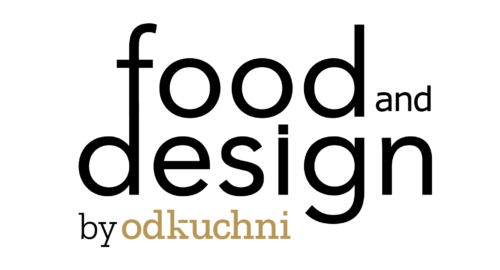
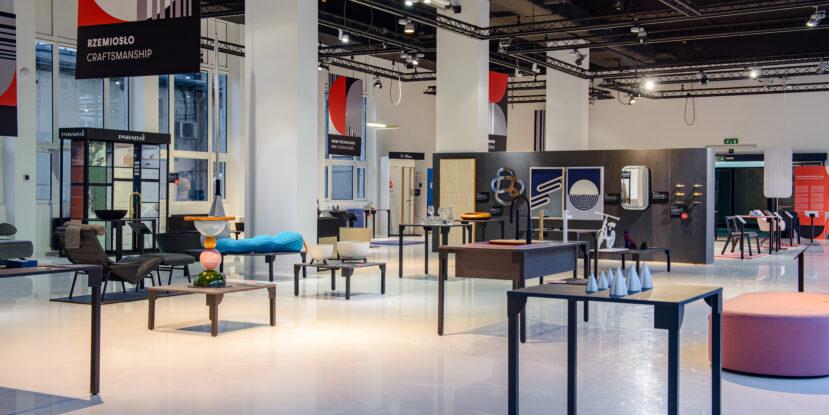



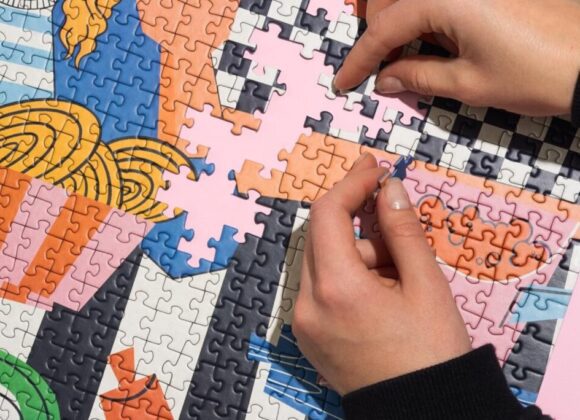
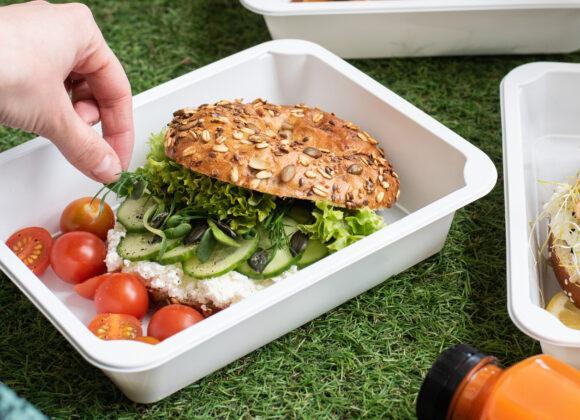



 Młodszy specjalista ds. komunikacji marketingowej i PR.
Młodszy specjalista ds. komunikacji marketingowej i PR.


 Absolwent Uniwersytetu Warszawskiego oraz Szkoły Głównej Gospodarstwa Wiejskiego. W branży HoReCa od ponad 10 lat. Przez lata związany z Grupą Trip, Sobienie Królewskie Golf and Country Club oraz restauracją Florentin w Warszawe.
Absolwent Uniwersytetu Warszawskiego oraz Szkoły Głównej Gospodarstwa Wiejskiego. W branży HoReCa od ponad 10 lat. Przez lata związany z Grupą Trip, Sobienie Królewskie Golf and Country Club oraz restauracją Florentin w Warszawe.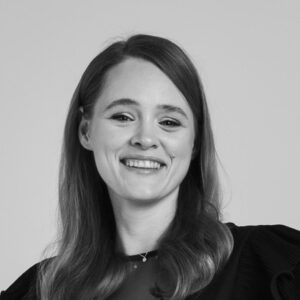 Absolwentka Wydziału Architektury Politechniki Warszawskiej na kierunku Architecture for Society of Knowledge oraz Komunikacji Wizualnej na Politecnico di Milano. Specjalistka od budowania nastroju. Doświadczenie zdobywała w kraju i zagranicą podczas licznych warsztatów międzynarodowych (Sevilla, Lizbona, Florencja), stypendium na La Sapienza (Rzym) oraz pracując m.in. w Carmi e Ubertis i ADM Milano.
Absolwentka Wydziału Architektury Politechniki Warszawskiej na kierunku Architecture for Society of Knowledge oraz Komunikacji Wizualnej na Politecnico di Milano. Specjalistka od budowania nastroju. Doświadczenie zdobywała w kraju i zagranicą podczas licznych warsztatów międzynarodowych (Sevilla, Lizbona, Florencja), stypendium na La Sapienza (Rzym) oraz pracując m.in. w Carmi e Ubertis i ADM Milano.








 Menedżer z wieloletnim doświadczeniem w branżach kosmetycznej, spożywczej, dziecięcej. W trakcie swojej kariery związany z firmami takimi jak: L’Oreal, Samsung, Danone-Nutricia, Unilever. W ciągu swojego życia zawodowego odpowiadał między innymi za rozwój sprzedaży i contentu eCommerce w Polsce i krajach Europy Środkowo-Wschodniej.
Menedżer z wieloletnim doświadczeniem w branżach kosmetycznej, spożywczej, dziecięcej. W trakcie swojej kariery związany z firmami takimi jak: L’Oreal, Samsung, Danone-Nutricia, Unilever. W ciągu swojego życia zawodowego odpowiadał między innymi za rozwój sprzedaży i contentu eCommerce w Polsce i krajach Europy Środkowo-Wschodniej. 





